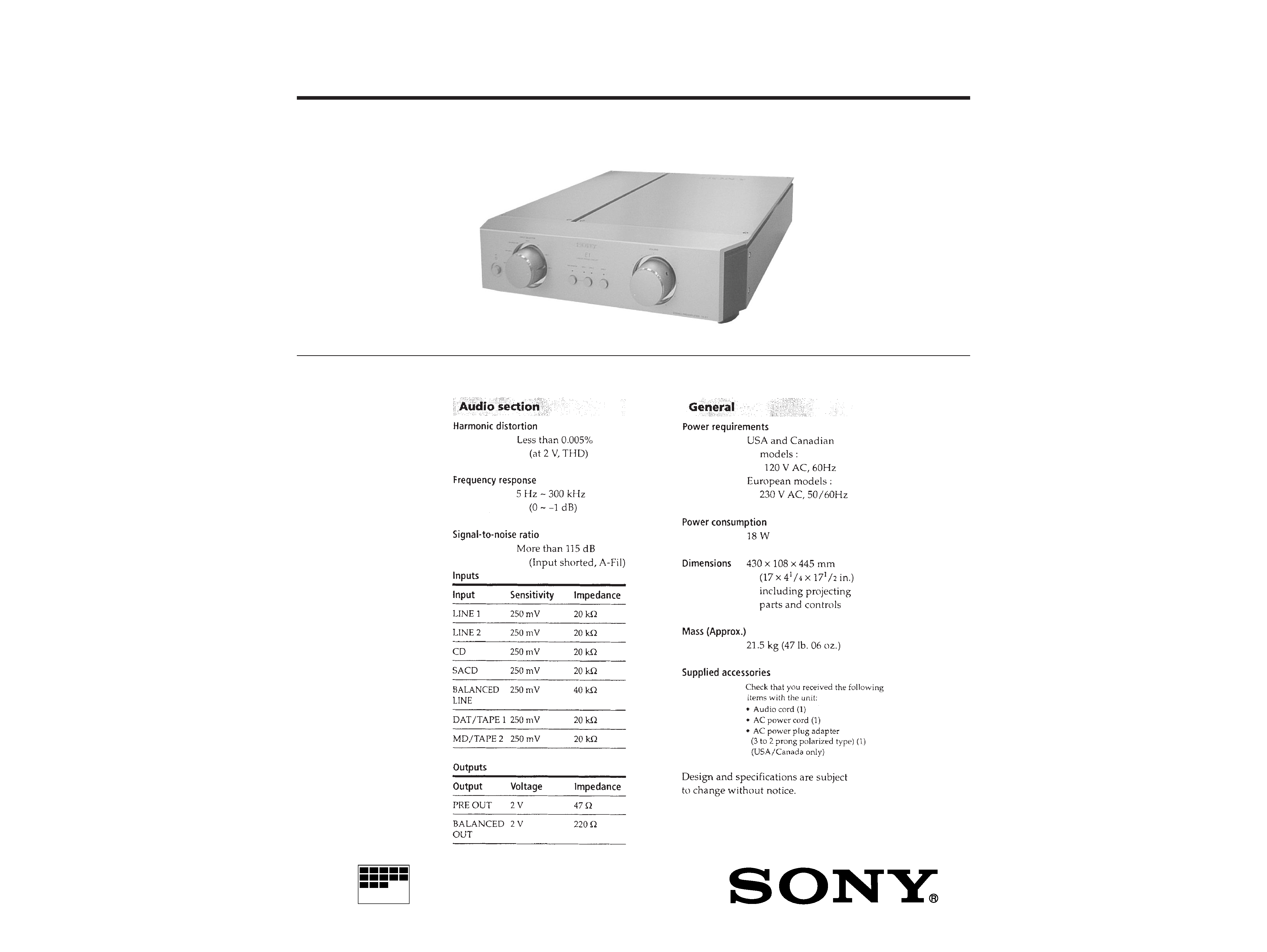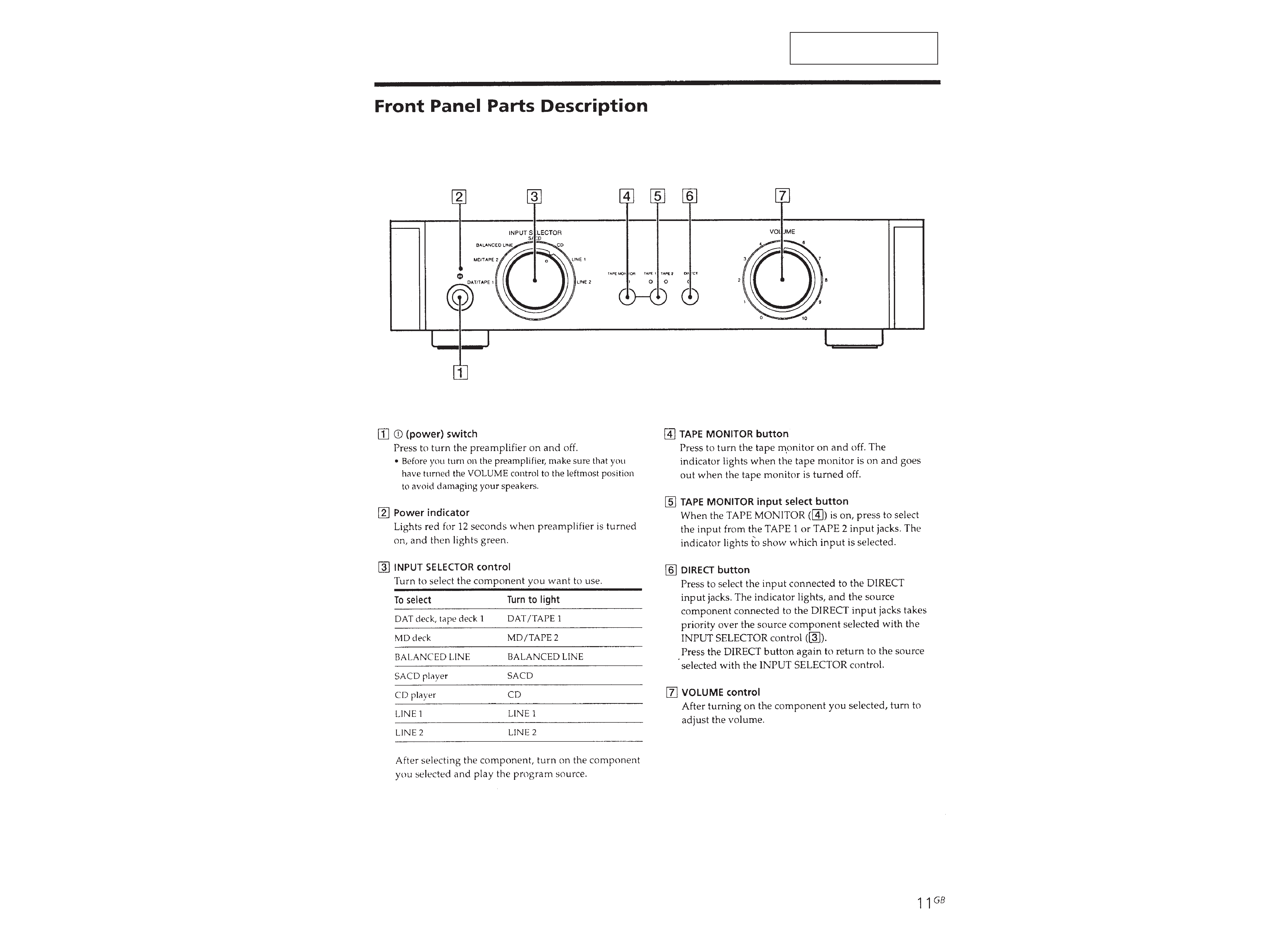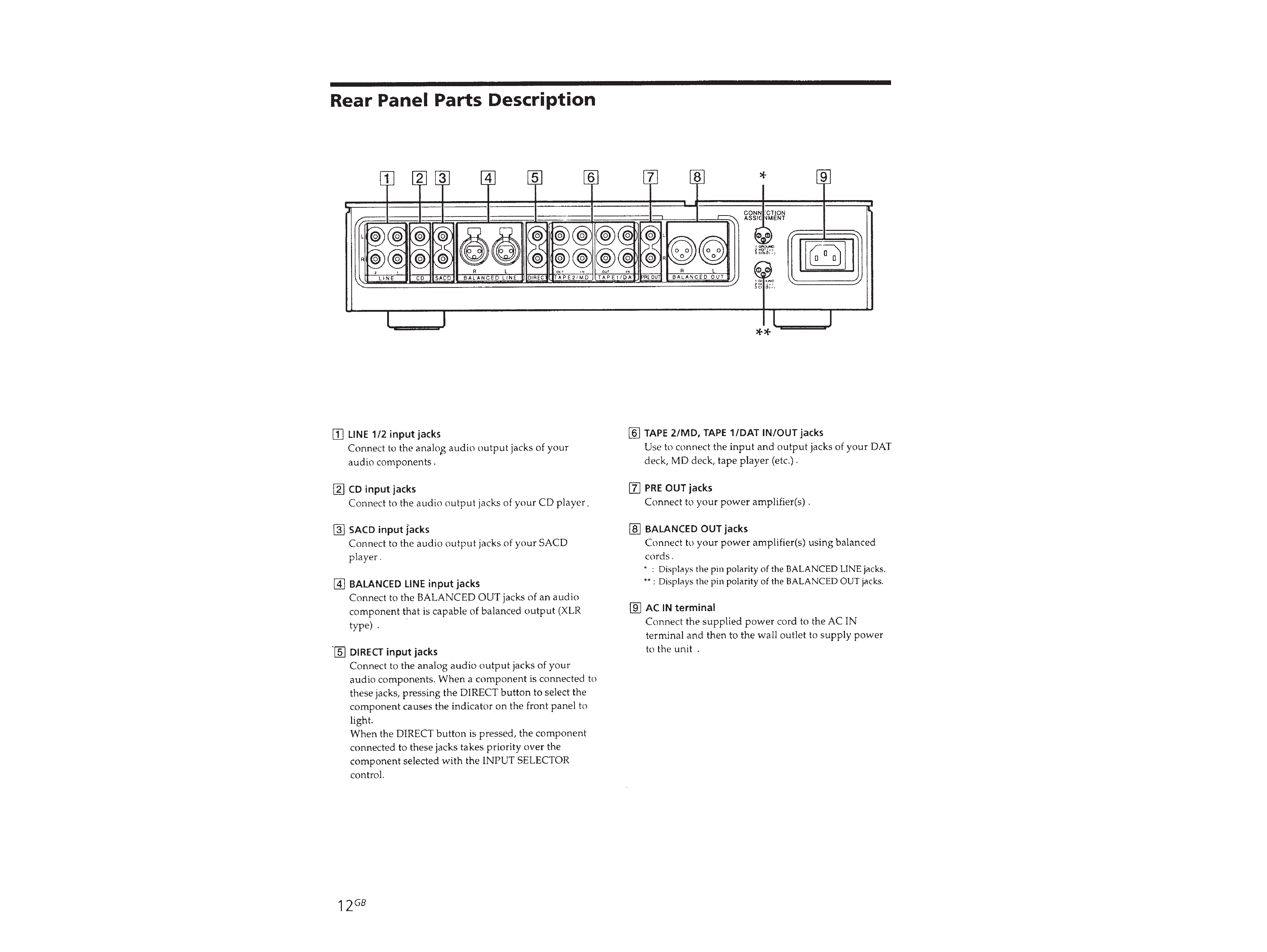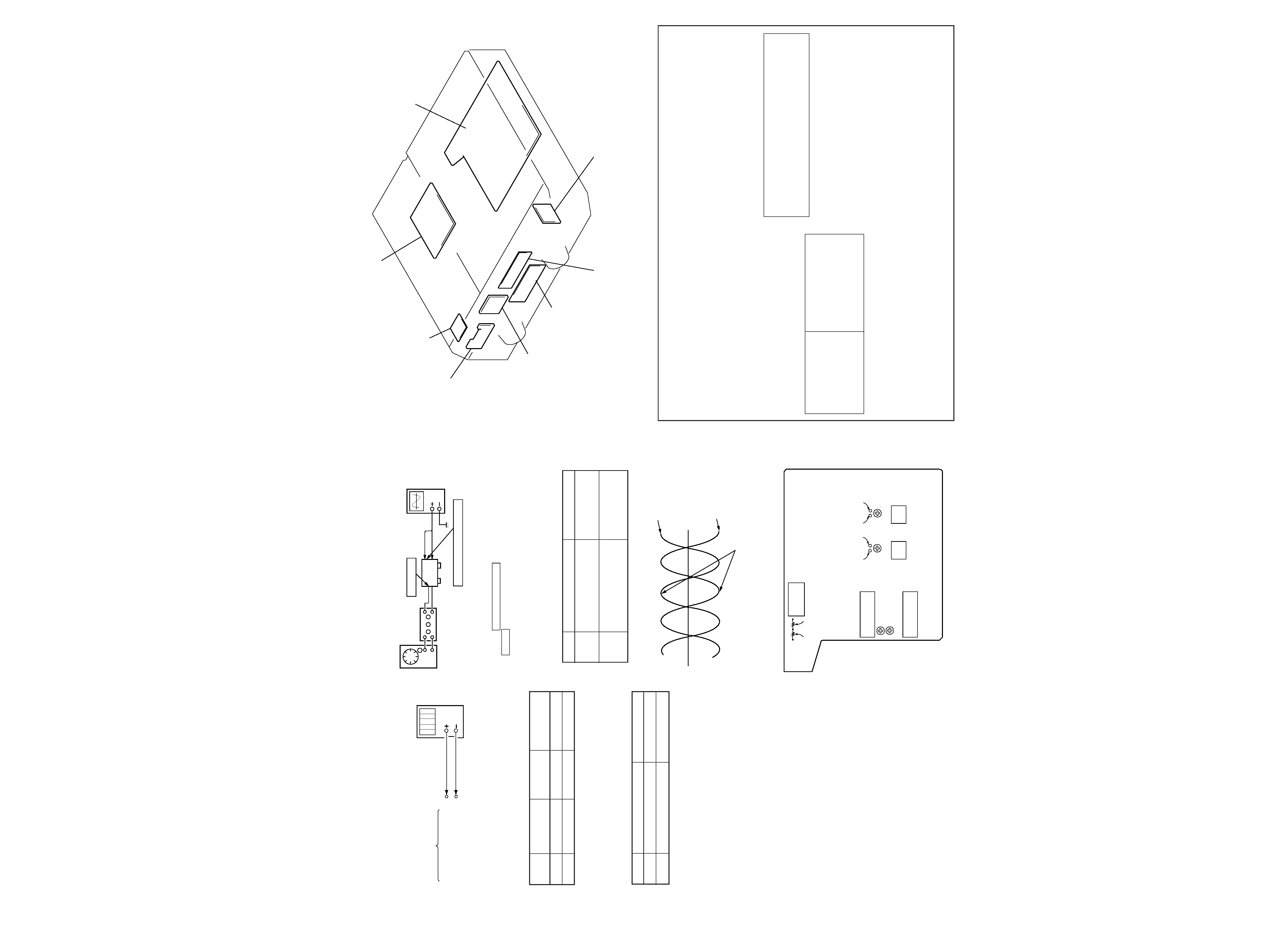
1
TA-E1
SPECIFICATIONS
STEREO PRE AMPLIFIER
SERVICE MANUAL
US Model
Canadian Model
AEP Model
UK Model
E Model
Australian Model
MICROFILM

2
TABLE OF CONTENTS
1. GENERAL ........................................................................... 3
2. ELECTRICAL ADJUSTMENT .................................... 5
3. DIAGRAMS
3-1. Circuit Boards Location ........................................................ 5
3-2. Schematic Diagram Main Section (1/3) .......................... 6
3-3. Schematic Diagram Main Section (2/3) .......................... 7
3-4. Schematic Diagram Main Section (3/3) .......................... 8
3-5. Printed Wiring Board Main Section ................................ 9
3-6. Schematic Diagram Power Section ............................... 10
3-7. Printed Wiring Board Power Section ............................ 11
4. EXPLODED VIEWS
4-1. Top Plate and Back Panel Section ....................................... 12
4-2. Front Panel Section ............................................................. 12
4-3. Bottom Plate Section .......................................................... 13
5. ELECTRICAL PARTS LIST ................................... 14
SAFETY CHECK-OUT
After correcting the original service problem, perform the follow-
ing safety checks before releasing the set to the customer:
Check the antenna terminals, metal trim, "metallized" knobs, screws,
and all other exposed metal parts for AC leakage. Check leakage as
described below.
LEAKAGE
The AC leakage from any exposed metal part to earth Ground and
from all exposed metal parts to any exposed metal part having a
return to chassis, must not exceed 0.5 mA (500 microampers). Leak-
age current can be measured by any one of three methods.
1. A commercial leakage tester, such as the Simpson 229 or RCA
WT-540A. Follow the manufacturers' instructions to use these
instruments.
2. A battery-operated AC milliammeter. The Data Precision 245
digital multimeter is suitable for this job.
3. Measuring the voltage drop across a resistor by means of a VOM
or battery-operated AC voltmeter. The "limit" indication is 0.75
V, so analog meters must have an accurate low-voltage scale.
The Simpson 250 and Sanwa SH-63Trd are examples of a pas-
sive VOM that is suitable. Nearly all battery operated digital
multimeters that have a 2V AC range are suitable. (See Fig. A)
Fig. A. Using an AC voltmeter to check AC leakage.
0.15
µF
To Exposed Metal
Parts on Set
1.5k
AC
voltmeter
(0.75V)
Earth Ground
SAFETY-RELATED COMPONENT WARNING !!
COMPONENTS IDENTIFIED BY MARK
! OR DOTTED LINE
WITH MARK
! ON THE SCHEMATIC DIAGRAMS AND IN
THE PARTS LIST ARE CRITICAL TO SAFE OPERATION.
REPLACE THESE COMPONENTS WITH SONY PARTS
WHOSE PART NUMBERS APPEAR AS SHOWN IN THIS
MANUAL OR IN SUPPLEMENTS PUBLISHED BY SONY.
ATTENTION AU COMPOSANT AYANT RAPPORT
À LA SÉCURITÉ!!
LES COMPOSANTS IDENTIFIÉS PAR UNE MARQUE
!SUR
LES DIAGRAMMES SCHÉMATIQUES ET LA LISTE DES
PIÈCES SONT CRITIQUES POUR LA SÉCURITÉ DE
FONCTIONNEMENT. NE REMPLACER CES COMPOSANTS
QUE PAR DES PIÈCES SONY DONT LES NUMÉROS
SONT DONNÉS DANS CE MANUEL OU DANS LES
SUPPLÉMENTS PUBLIÉS PAR SONY.
MODEL IDENTIFICATION
-- BACK PANEL --
PARTS No.
MODEL
4-214-526-1
US , CND
4-214-526-2
AEP, UK, E, AUS
Parts No.
·
Abbreviation
CND : Canadian model
AUS : Australian model

3
SECTION 1
GENERAL
This section is extracted from
instruction manual.

4

TA-E1
55
SECTION 3
DIAGRAMS
3-1. CIRCUIT BOARDS LOCATION
SECTION 2
ELECTRICAL ADJUSTMENTS
IDLING ADJUSTMENT AND OFFSET VOLTAGE
CHECK
· Perform this adjustment after replacing CP103 and CP104.
· Perform this adjustment more than 10 minutes after supplying
the power.
Connection:
BALANCE OUTPUT LEVEL ADJUSTMENT
· Perform this adjustment when replacing CP102.
· Perform this adjustment after the idling adjustment
Connection:
MAIN board
SW L board
AC J board
LED A board
LED B board
SW P board
PS board
VOL board
THIS NOTE IS COMMON FOR PRINTED WIRING
BOARDS AND SCHEMATIC DIAGRAMS.
(In addition to this, the necessary note is printed
in each block.)
For schematic diagrams.
Note:
· All capacitors are in µF unless otherwise noted. pF: µµF
50 WV or less are not indicated except for electrolytics
and tantalums.
· All resistors are in
and 1/4 W or less unless otherwise
specified.
·
%
: indicates tolerance.
· 2 : nonflammable resistor.
· 5 : fusible resistor.
· C : panel designation.
· S : B+ Line.
· T : B Line.
· H : adjustment for repair.
· Voltages and waveforms are dc with respect to ground in
playback mode.
· Voltages are taken with a VOM (Input impedance 10 M
).
Voltage variations may be noted due to normal produc-
tion tolerances.
· Signal path.
F
: TUNER
Note:
The components identi-
fied by mark
! or dotted
line with mark
! are criti-
cal for safety.
Replace only with part
number specified.
Note:
Les composants identifiés par
une marque
! sont critiques
pour la sécurité.
Ne les remplacer que par une
piéce portant le numéro
spécifié.
For printed wiring boards.
Note:
· X : parts extracted from the component side.
·
®
: Through hole.
· b : Pattern from the side which enables seeing.
(The other layers' patterns are not indicated.)
Caution:
Pattern face side: Parts on the pattern face side seen from the
(Side B)
pattern face are indicated.
Parts face side: Parts on the parts face side seen from the
(Side A)
parts face are indicated.
Digital voltmeter
TP501 (L-CH), TP502 (R-CH)
TP503 (L-CH), TP504 (R-CH)
MAIN board
Procedure:
1. Connect the digital voltmeter as shown above.
2. Adjust RV501 (L-CH) and RV502 (R-CH) of the MAIN board
so that the digital voltmeter reads 50 mV ±5 mV. (Idling adjust-
ment)
3. Measure the voltage of both terminals of R221 (L-CH) and R222
(R-CH) of the MAIN board, and check that the voltage is within
2 mV.
(Offset voltage check)
Measuring
Adjusting
Adjusting
Point
Point
Value
L-CH
TP501 to TP503
RV501
50 mV ± 5 mV
R-CH
TP502 to TP504
RV502
50 mV ± 5 mV
Measuring Point
Specified Value
L-CH
Both terminals of R221
Within 2 mV
R-CH
Both terminals of R222
Within 2 mV
Procedure:
1. Connect as shown above.
2. Rotate the INPUT SELECTOR knob, and set the input source
to LINE 1 .
3. Set the input level so that the oscilloscope waveform level be-
comes approx 3 V.
4. Adjust RV401 (L-CH) and RV402 (R-CH) so that the two wave-
form levels on the oscilloscope become equal and their phases
are reversed.
BALANCED-OUT
2 3 pin
LINE1 input
Set
AF OSC
attenuator
Oscilloscope
Adjusting Value:
Adjusting Point
Adjusting Value
L-CH
Pin
2 (CH1) and
RV401
Pin
3 (CH2) of CN203
R-CH
Pin
2 (CH1) and
RV401
Pin
3 (CH2) of CN203
Phases of waveforms of
Pins
2 and 3 should be reversed
Waveform of
Pin
2 (CH1)
Waveform of
Pin
3 (CH2)
Adjustment Location:
[MAIN board] (Component Side)
OFFSET
VOLTAGE
R222 R221
RV401
BALANCE OUT
LEVEL L CH
RV402
BALANCE OUT
LEVEL R CH
RV501
IDLE
L CH
TP503
RV502
IDLE
R CH
TP501 TP504 TP502
